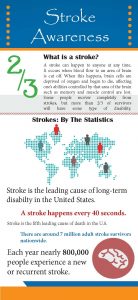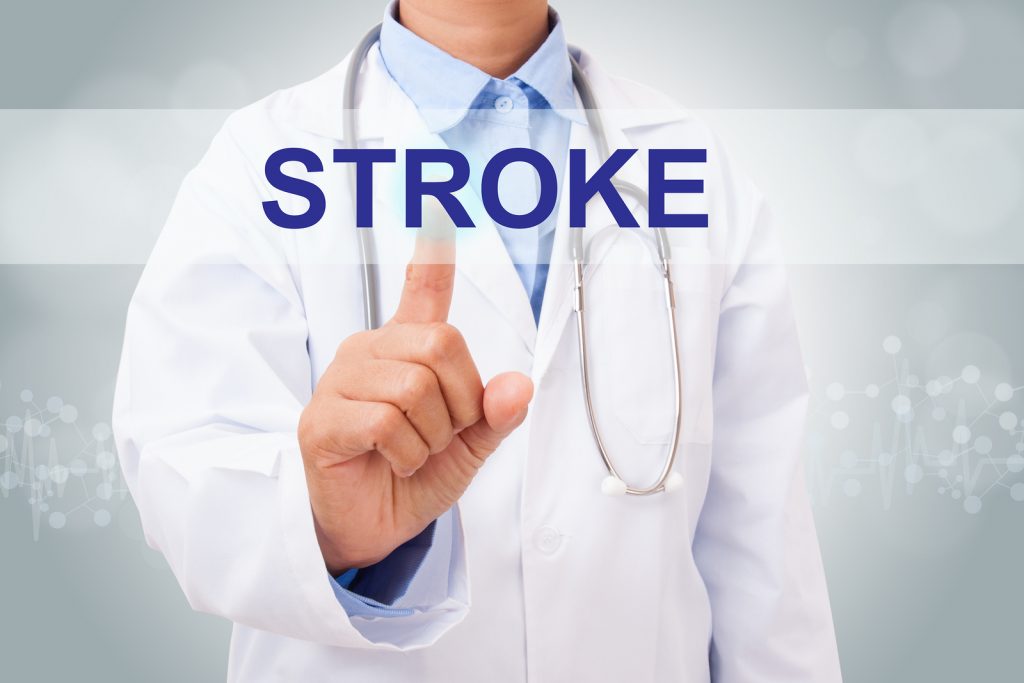Did you know that every 40 seconds, a person in America has a stroke? More importantly, for every person that dies from stroke, more than 5 times as many will survive, often times with physical damage and changes. Many factors contributing to strokes, such as family history, age, and gender are uncontrollable, but key factors such as diet and physical activity are things that we can do to decrease our risks of being impacted.
A Healthy Diet

A healthy diet can help you reduce the risk of chronic diseases, improve your overall health, and help you reach or maintain a healthy weight. Eating healthy includes making informed decisions about food choices and balancing your calories. The latest guidelines from Dietary Recommendations for Americans 2010 include the following:
- Eat more foods from plants, such as vegetables and beans, whole grains, and nuts.
- Eat more seafood in place of red meat, poultry, and eggs.
- Limit the intake of sodium, solid fats, added sugars, and refined grains.
- Reduce calories you eat and drink and increase calorie you burn through physical activity.
Excess weight puts a strain on the entire circulatory system. It can also make people more likely to have high cholesterol, high blood pressure and diabetes, all of which can increase stroke risk.
Get Your Body Moving
A recent study showed that people who exercise five or more times per week have a reduced stroke risk. The latest recommendations from the CDC on Physical Activity Guidelines for adults include the following:
- Moderate Activity. 150 minutes of moderate-intensity activity per week (brisk walking, water aerobics, bicycling) and 2 or more days a week of weight training exercises.
- Vigorous Activity. Or 75 minutes of vigorous-intensity activity per week (jogging, running, swimming laps) and 2 or more days a week of weight training exercises.
- Break it up. If you can’t fit a 30-minute activity in one time, break it up into 10-minute segments. Remember that all physical activity counts.
- Make physical activity fun. Walk or bike with a friend, take a dance class, and try different times of the day.
Regular physical activity will improve your overall health and fitness, and reduce your risk for chronic diseases.
How Can Therapy Help After Stroke
About 80% of people who have had a stroke experience weakness on one side of their bodies. For those of us who have a family history or have loved ones that have been impacted by a stroke, it is important to know how therapy can help. Therapy Center offers speech, occupational, and physical therapy services in a variety of settings including home health, skilled nursing, and outpatient rehabilitation.
- Physical therapist—focuses on moving, reducing pain, restoring function, and preventing disability.
- Occupational therapist—focuses on helping stroke survivors relearn the skills needed to perform everyday activities, regain and use fine motor skills, and modify their environments to compensate for lost function.
- Speech-language pathologist—helps patients when they are unable to produce sounds correctly or fluently, or has problems with their voice or when they have trouble understanding others, or sharing thoughts, ideas, and feelings.
Being knowledgeable about the options and care for yourself or loved ones is important in the recovery process. As the leading cause of long-term disability in the United States, stroke is relevant in each of our lives. Educating ourselves on prevention and lifestyle changes is a great place to start when looking to reduce the statistics and impact.
For more tips and facts on stroke, visit our resources page and infographic.
Therapy Center offers speech therapy in a variety of settings. Visit our website for more information on our services and areas we operate.

